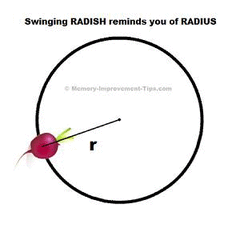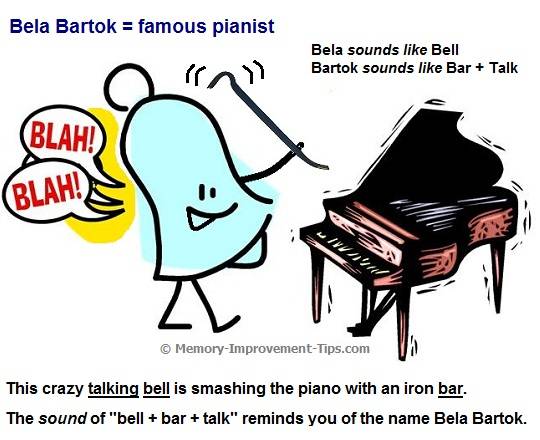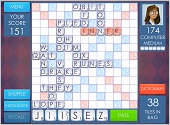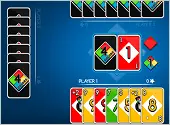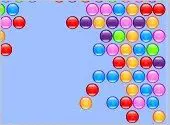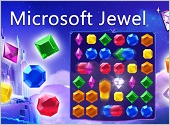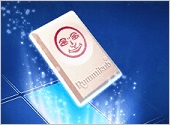- Home
- Better Memory
- Memory Systems
- Keyword Method
Keyword Method
The Keyword Method is an effective system for remembering definitions, learning foreign language vocabulary, and more. Any two pieces of information can be linked together in your memory using this method.
The way you use the Keyword Method is by combining the creation of substitute words with visualization (a two-step process):
First, convert the sound of the word into one or more concepts that can be visualized. Then, associate those concepts with an image representing the actual meaning of the word.
Quick example: Students learning geometry sometimes confuse the diameter and radius of a circle. The bizarre picture at right of a radish swinging inside a circle is a Keyword Method trick for remembering the difference.
Note: The "radius" is a line from the center of the circle to the edge. The "diameter" is a line from edge-to-edge passing through the center.
Study the image for a few moments. With this silly picture in mind, could you ever again confuse radius with diameter?
When someone mentions "radius" in the future, the sound of that word should remind you of radish. The image of a radish swinging inside a circle should pop into your mind instantly.
The radish is swinging back-and-forth from the center. Thus, "radius" means the distance from the center of the circle to the edge. Easy, right?
It's Natural to Remember Images Easily

Images and objects are easy to recall.
The right hemisphere of your brain is very good at remembering images. You can imagine all the furniture in the lounge or living room of your house without effort, right?
It's not hard to call to mind your favorite orange chair. Certainly you don't need to "study" the chair or its location in order to remember it. Your brain just does it!
You know just where it's placed in the room, without effort. You didn't make a conscious effort to memorize that information. You didn't need to.
Your brain is also skilled at remembering the unusual. You don't waste memory space on what you ate for breakfast two weeks ago.
But when something bizarre, strange, or out of the ordinary happens, you remember it. That's why making an effort to think up weird, even impossible, images is an essential part of the Keyword Method, too.
Integrating your brain's ease of remembering images into the learning process makes it easier to recall the information.
In addition to creating the image, the other step is to replace abstract details that are hard to visualize (like "radius") with easy-to-imagine objects or actions that sound like the abstract word (such as "radish" for radius).
Another Example
Here's another one. Suppose you are reading a book about classical music composers. It mentions Hungarian composer Bela Bartok, a master of the piano. You would like to remember that Bartok is a famous pianist.
To remember this, associate Bartok's name with a piano. How, though, since Bartok is not the name of an object you can visualize?
Use the Keyword method, which is substitute words plus visualization. Listen to the sound of his first name: Bela. It sounds like "bell".
His last name Bartok sounds to me like "bar talk". So I imagine a crazy scene that includes a bell, bar, piano, and talking.
Here is an image that pulls it all together:
It's important to review the silly image mentally. Then, when I hear or read his name, Bela Bartok, it reminds me of the piano. Oh, yeah, he was a famous pianist. See how that works?
You can take this method much further, to memorize material of nearly any complexity.
Thinking up substitute words and mental images is fun. And it really works.
More enjoyable, anyway, than brain-numbing rote memorization (i.e., repeating something over and over). The more you practice the Keyword image method, the faster and easier it becomes.
The applications of this memorization technique are almost endless. Foreign language vocabulary; history names, dates, and events; facts and figures from a science article or textbook; the main parts of the storyline in a novel. The limit is literally just your imagination.
More Examples
For more examples of the Keyword method, try the following links:
If you are memorizing English vocabulary or studying a foreign language, practice this technique. I think you will be very surprised, even amazed, at how well this works.
Published: 02/07/2007
Last Updated: 06/11/2020
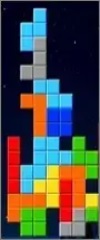
New / Popular
Multiplayer
Board Games
Card & Tile
Concentration
Math / Memory
Puzzles A-M
Puzzles N-Z
Time Mgmt
Word Games
- Retro Flash -
No sign-up or log-in needed. Just go to a game page and start playing! ![]()
100 Free Puzzle Printables:
Sudoku / Word Search

